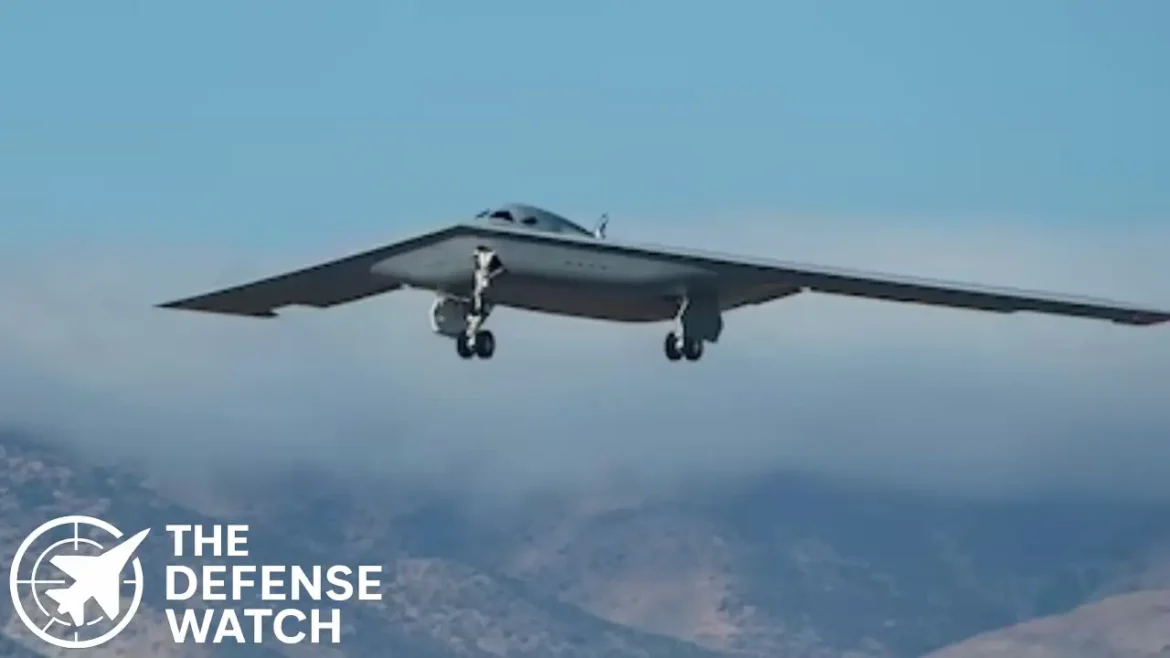Second B-21 Raider Bomber Joins U.S. Air Force Testing Fleet at Edwards AFB
The U.S. Air Force has confirmed that its second B-21 Raider stealth bomber has successfully flown to Edwards Air Force Base (AFB) in California, marking a significant expansion of the test campaign for America’s next-generation long-range strike aircraft.
With two B-21s now on-site, the service said it can accelerate testing beyond basic flight performance checks, moving into evaluations of weapons integration and advanced mission systems. This development is a milestone in preparing the bomber for operational use later this decade.
Accelerating the Test Campaign
Air Force Secretary Troy Meink emphasized the momentum the second bomber brings to the program.
“With the arrival of the second B-21 Raider, our flight test campaign gains substantial momentum,” Meink said. “We can now expedite critical evaluations of mission systems and weapons capabilities, directly supporting the strategic deterrence and combat effectiveness envisioned for this aircraft.”
The addition allows for parallel testing of flight performance, mission systems, and weapons integration, while also giving maintainers hands-on training in sustainment, repairs, and logistics management.
Designed for Stealth and Survivability
Built by Northrop Grumman, the B-21 is described as the world’s first sixth-generation aircraft, designed to operate in contested environments against modern air defense networks. The Raider will carry both nuclear and conventional weapons, with its stealth and long-range capabilities allowing it to penetrate heavily defended airspace.
The B-21 is set to replace the aging B-1B Lancer and B-2A Spirit, forming a modernized bomber fleet alongside upgraded B-52J Stratofortresses. The Air Force plans to acquire at least 100 Raiders, with the first units expected to achieve initial operational capability in the latter half of the 2020s.
Edwards AFB at the Center of Testing
Edwards AFB, long the hub of Air Force flight testing, is now supporting expanded B-21 evaluations. The first Raider arrived there in November 2023, nearly a year after its public unveiling in Palmdale, California.
Now, with two bombers available, the Air Force can conduct more simultaneous testing and maintenance drills, providing critical data on how the aircraft can be sustained in real-world conditions.
General David Allvin, Air Force Chief of Staff, highlighted the operational urgency:
“The addition of a second B-21 to the flight test program accelerates the path to fielding. By having more assets in the test environment, we bring this capability to our warfighters faster, demonstrating the urgency with which we’re tackling modernization.”
Strategic Context and Analysis
The B-21 Raider forms the backbone of the Pentagon’s long-range strike modernization strategy, ensuring U.S. strategic deterrence remains credible against peer competitors like China and Russia. Its combination of stealth, digital engineering, and open architecture makes it central to the Air Force’s vision of networked, multi-domain operations.
Analysts note that having two aircraft in flight testing significantly reduces program risk, enabling redundancy in case of maintenance issues and allowing the Air Force to validate systems faster. However, with costs projected in the hundreds of billions over the program’s lifecycle, keeping the B-21 on schedule and within budget will remain a critical challenge.
FAQs
The B-21 Raider is the U.S. Air Force’s next-generation stealth bomber designed to carry both nuclear and conventional weapons.
At least 100 B-21 Raiders, alongside 76 modernized B-52J bombers.
The Air Force expects initial operational capability in the latter half of the 2020s.
The Raider is being developed and produced by Northrop Grumman.
It allows expanded testing of mission systems, weapons integration, and maintenance practices, accelerating the path to operational readiness.
🔗 Source: U.S. Air Force


6 comments
[…] The F130, derived from the proven BR700 family of commercial engines, is expected to deliver a 30% improvement in fuel efficiency compared to the TF33. Rolls-Royce has committed to assembling and testing the engines at its Indianapolis facility, ensuring long-term support for the bomber fleet. […]
[…] B-21 program continues to advance technically. The second B-21 test aircraft began flight testing in September, marking a shift from initial flight-handling validation […]
[…] the program has made visible progress — e.g., the second test airframe entering flight campaigns — many details remain classified. Production and cost remain […]
[…] unique limitations. The Army’s Arctic Division, headquartered in Alaska, plays a central role in testing equipment and shaping doctrine for forces expected to operate in cold-weather and electromagnetic-challenged […]
[…] the restoration of Spirit of Georgia, the B-2 fleet returns to 19 operational bombers, following the retirement of another damaged B-2 — “Spirit of Hawaii” — in 2024 after a […]
[…] delivered by Boeing from its San Antonio, Texas facility, the radar-equipped B-52 was ferried to Edwards AFB where crews from the 49th Test Evaluation Squadron and the 419th Flight Test Squadron will lead the […]